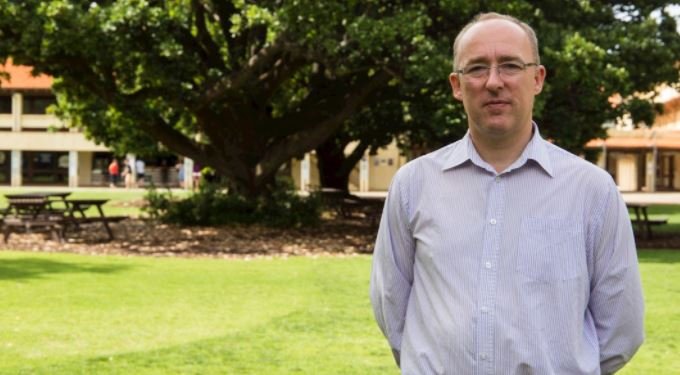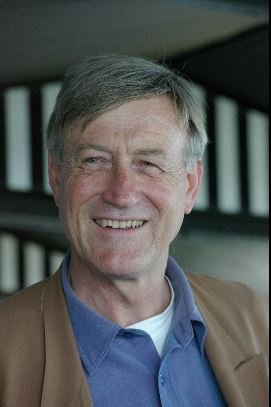Aboriginal organisation liaising with Woodside on Scarborough LNG project says "there is currently no scientific evidence that emissions are impacting rock art" despite conflicting reports
Murujuga has been at the centre of national news this month and last, as multiple protests across the State focussed Australians on the expansion of the $16.5 billion dollar Woodside Scarborough LNG and Pluto Train 2 project.
The project’s controversy lies in not only the environmental impact that the 430 kilometre under-sea pipeline linking the gas field with the Burrup will have on marine environment, but also the impact of ongoing emissions on the rock art of the Burrup Peninsula (Murujuga).
Murujuga Aboriginal Corporation (MAC) - an alliance of Ngarluma, Mardudhunera, Yaburara, Yindjibarndi and Wong-Goo-Tt-OO traditional owners created in service of the Burrup & Maitland Industrial Estates Agreement - has yet to weigh evidence in the debate about the effect of industrial emissions. In fact, the Corporation contends there is no reliable evidence that emissions are impacting Murujuga’s rock art.
Opponents of the Scarborough development suggest that due to clause 4.8 of the Burrup & Maitland Industrial Estates Agreement 2003 - in which the above signatories agreed they would surrender any native title rights and withhold their opposition to any future industrial development within the BMIEA area of the Burrup - Murujuga Aboriginal Corporation is essentially gagged and bound on the subject of emissions or other environmental and cultural impacts upon the area from industry.
The conclusions within a 2021 conference paper by Ian MacLeod and Warren Fish, are that industrial pollution on the Burrup is not impacting rock art.
The authors of ‘The Impact of Industrial Pollution on the Rock Art of Murujuga’ (Benjamin W. Smith, John L. Black, Stephane Hoerle, Marie A. Ferland, Simon M. Diffey, Jolam T. Neumann and Thorsten Geisler) examine the conclusions of MacLeod and Fish, and judge they go against decades of research. Years of published studies agree that acidity from bird droppings, lichens and trees destroy the red crust or desert varnish that is formed on rocks by the chemical reactions of water, microbes and minerals. The nitric oxide (NO) emitted by Woodside is described in the Australian Government’s National Pollutant Inventory as forming ‘nitric acid (a strong acid) when dissolved in water’. The contention of MacLeod and Fish is, rain events at Murujuga wash off the acid from emissions. However the above October 2021 Rock Art Research article challenges the rain theory of MacLeod and Fish, and says there are insufficient cyclonic events to achieve this cleaning effect. The Report also says research shows the varnish-forming organisms and delicate chemistry are already being affected by industry, and that Woodside emissions at 2019 from its reports were 8900 tonnes of nitric oxide (NO).
Although government insists on locating industry on land in close proximity to the Murujuga National Park area - designated as the ‘The Burrup Strategic Industrial Area‘ in or about 2018 - nearby, the Burrup & Maitland Industrial Estate created in 2003 sits more or less vacant. In addition, a proposal by Perdaman, a multi-national group based in WA, was recommended for environmental approval in September 2021 for the production of urea, a key component of solid nitrogen fertiliser and a pollution-reducing additive to diesel fuel, to sit nearby to the existing Yara Pilbara Fertilisers plant.
In November 2021, Reuters reported that Murujuga Aboriginal Corporation is seeking a stake in the Scarborough project and Pluto LNG expansion. CEO Peter Jeffries told Reuters "We want to be strategically vested in any project on country."
Now that Murujuga Aboriginal Corporation has been named as one of the main negotiators in the Woodside Scarborough project, alongside Ngarluma Aboriginal Corporation and Ngarluma-Yindjibarndi, it must closely consider the questions raised by the Rock Art Research article about the findings of MacLeod and Fish (both of whom declare they are contractors in the petrochemical industry).
Woodside CEO said they have a good relationships with Murujuga Aboriginal Corporation
Conservation Council WA CEO Piers Verstegen - CCWA is taking Woodside to court (Source: Ngaarda media)
Woodside CEO confirmed their talks with MAC and told Reuters "I'm not going to talk about any specific conversations that we're having with any TO (traditional owner) group, suffice it to say that we've got very active engagements with all three of those groups."
To address fears for the first subsea Indigenous artefacts in Australia discovered off the Murujuga coast in July 2020, Woodside states it believes there is a low likelihood of submerged cultural heritage being affected by the pipeline.
Woodside also states ‘analysis shows Woodside’s Australian growth projects, including Scarborough, could avoid 650 Mt of CO2-equivalent emissions between 2026 and 2040 by replacing higher emission fuels in countries that need our energy’, and that as a corporation it is targeting net zero by 2050. The company maintains Scarborough gas processed through Pluto Train 2 will be one of the lowest carbon LNG sources in Australia.
Since 2018 Woodside has been exploring a solar project to reduce emissions at the Pluto facility, and is looking to also supply the proposed Perdaman urea plant with solar energy.
However, the overarching concerns in the debate include the protection of the significant cultural heritage value of Murujuga in light of the bid for its World Heritage listing (just as more industry achieves EPA approval and the Government actively promotes the Burrup Strategic Industrial Area), the effect on plants and animals on the Burrup, and the folly of major gas project at a time when ‘only 12% of Australians prefer investment in gas to power Australia’s economic recovery, while the majority of Australians (63%) prefer investment in renewables as a pathway for economic recovery’ (The Australia Institute, Oct 2013).
DESPITE LIAISON WITH INDIGENOUS GROUPS, COMMUNITY FEELS THERE WAS A LACK OF CONSULTATION
Noongar man Robert Bropho staged his own protest against the Scarborough LNG gas development in Karratha on December 1st (Photo: Raelene Cooper)
Mardudhunera traditional healer Josie Alec, co-organiser of the Save Our Songlines protest said she found out about the project only weeks earlier.
Raelene Cooper, who sits on the board of Murujuga Aboriginal Corporation, confirmed she is unable to talk about what is said at meetings.
Meg O’Neil (Source, Woodside)
Josie Alec (source, Esther Joy Montgomery)
Ben Smith, Professor of World Rock Art at UWA
Raelene Cooper (second from the left, Source: Esther Joy Montgomery)
Patrina and Liz with their arms in cement
Gerard Mazza
Professor Peter Newman
Dr Stephen Bennetts from Friends of Rock Art
Dr Jo McDonald, Australian archaeologist











